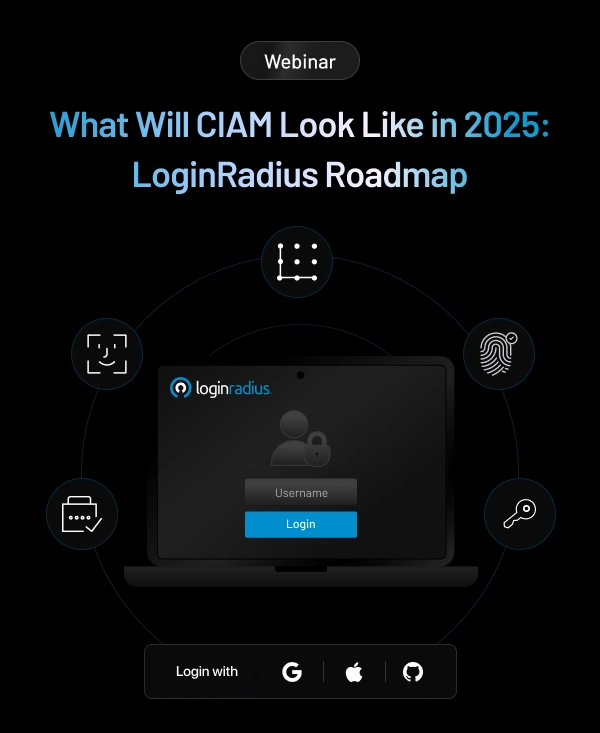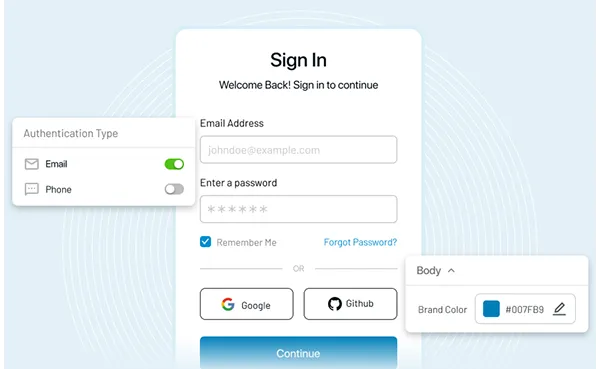Introduction
There is no second opinion about the importance of data security. The biggest challenge for a service provider in today’s information age is collecting, handling and managing data securely. With much potential and opportunity, organizations also have a responsibility to ensure the safety and security of customer data they handle.
Every company that wants to win customers over with digital products or services should create an online portal. When your application is accessed by a customer for a product or service, they provide their personal information. A well-designed CIAM system can help you maximize customer experience and minimize risks for your security and IT teams.
Understanding Stakeholder Engagement
Stakeholder engagement is crucial to modernizing customer identity and access management (CIAM).
In order to effectively implement a CIAM solution, it's important to understand the needs and perspectives of all stakeholders involved, from customers and employees to partners and vendors.
By engaging with stakeholders throughout the implementation process, you can build trust, foster collaboration, and ensure that everyone's needs are being met. This can lead to a smoother implementation process, greater user adoption, and, ultimately, better business outcomes.
From gathering stakeholder feedback and involving key decision-makers to communicating clearly and regularly, there are a variety of strategies that can help ensure successful stakeholder engagement in CIAM modernization efforts.
By prioritizing stakeholder engagement, you can create a more customer-centric, efficient, and effective CIAM solution that benefits everyone involved.
Here’s how you can bring your stakeholders onboard to modernize your CIAM.
Tips For Engaging Stakeholders In The Modernization Of Your CIAM
1. Narrow down your objectives and requirements
Modernization of CIAM is an ongoing process. This means that you cannot modernize everything at once. As a result, you should involve your stakeholders in the process and ensure that all your teams have a clear understanding of each other's expectations.
Implementing CIAM is a major undertaking. It incorporates high degrees of sophistication and functionality, and can affect every aspect of your product, service, or organization. The level of maturity of your product/service, the size of your company, and the future that you’re aiming for influence which aspects of CIAM you implement first. Therefore, clearly communicate your business strategy to all stakeholders before finalizing your implementation plan.
2. Prioritize your requirements
Once a requirement is finalized, it's important to prioritize it among other business heads and other key stakeholders. Decide which requirements are most important and which are secondary. Based on this prioritization, you can create a list of CIAM features keeping functionality, cost, aesthetics and other factors in mind.
3. Engage actively
The requirements and priorities of each department are different. Your Chief Marketing Officer would like the CIAM to give the best registration and onboarding experience. The Chief Information Officer will look to modernize CIAM to seamlessly integrate across the organization and to reduce complexity in handling data.
Each stakeholder has a set of expectations. Stakeholders should be involved from the initial phase of the CIAM modernization process. Doing so will help boost participation and goal alignment, making the overall objectives easier to achieve.
4. Manage expectations
Technology can do anything, but if we expect the impossible, we may end up empty-handed. If you listen carefully to each team’s needs and concerns, however, you’re more likely to build a system that works for everyone. It’s important to take many things into account when designing the CIAM solution—for instance, usability, customer experience, convenience, security, and maintainability.
5. Build trust
Active listening encourages stakeholders to be interested and participate actively in an initiative. Building genuine trust will go a long way in getting the best results. Differing views and priorities require management to take a strategic decision that is aligned to the overall objectives of the initiative.
Trust is built when we listen, engage actively, communicate regularly, and address their requirements.
6. Remember: Customer is King
Customer experience is important and a common objective to all stakeholders is also vital. As per 2021 market research by Gartner, 89% of brands prioritize the digital experience of their customers. The market is a highly competitive space. A complicated registration and login experience for a customer is the last thing you want.
Customers expect a personalized experience with ease of use and confidence in data security. CIAM should provide trust on who is in control of data, how and for what purpose the data is collected. Further, it should provide the option to modify the consent on-demand by the customer.
Companies holding on to their legacy applications with outdated functionality can make their customers think twice before updating their data. Stakeholders usually prioritize customer experience high up in the order without compromising the security when they modernize CIAM.
7. Make no compromise on regulatory compliance
Modernization of CIAM becomes necessary due to the need for compliance with global data privacy requirements. Additionally, there could be regional compliances that may be required. Most often, these regulatory bodies specify what the requirements are. However, they do not elaborate on how these requirements can be achieved.
Businesses take advantage of CIAM to ensure compliance with regulations and avoid hefty fines. Managers, who are stakeholders in the process, provide their inputs as well. Companies should not look at CIAM only from a business angle; they must also involve other stakeholders in the decision-making process.
8. Deal with different opinions
The requirements of the marketing team may differ from admin and infrastructure teams. But critical points will have high levels of convergence as they are common across different verticals.
Large organizations with multiple products and services modernize CIAM to achieve single access, integrated, hosted on Cloud with CRM enabling a 360 degree view of the customer. It makes implementing CIAM's best practices much simpler. It provides a better understanding of your customer behavior patterns, enabling more effective marketing campaigns.
Cloud-based CIAM gives better ROI, reduces effort on maintenance and enables faster scalability. Validate your CIAM strategy with your stakeholders in making the correct decisions.
In Conclusion
Even though it may sound like a daunting task, modernizing your CIAM is not impossible if you are willing to put in the work. The key lies in communicating how and why modernization will be beneficial for all stakeholders, and eventually getting everyone onboard with the plan. The tips mentioned in this blog will help you make this process easier since stakeholder engagement will simplify things for you.

















